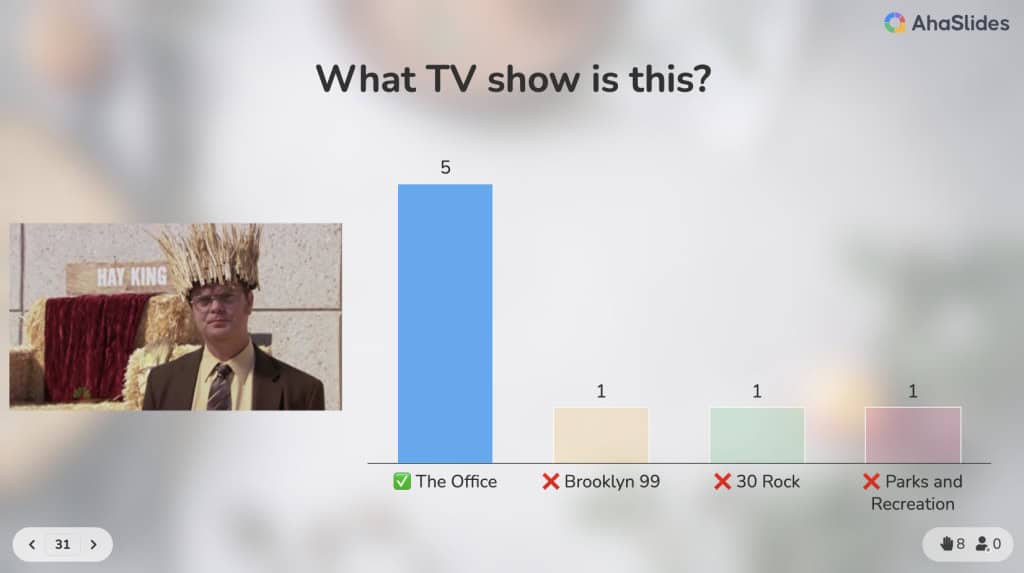Nobody likes bad speeches. No matter if this is the first time or a millionth time you have delivered your speech, there are still so many little mistakes that you could make. From unintentionally filling your audience with too much information to inserting funny but irrelevant images, these are the seven most common mistakes in bad speeches and how to avoid them.
Table of Contents
Turn presentations from monologue to two-way conversation
Engage the audience with live polls and quizzes. Sign up for free.

7 Mistakes in Bad Speeches You Should Avoid
Mistake 1: Forgetting Your Audience
Typically, there are 2 extremes that presenters like you would suffer from when addressing the interests of your audience:
- Delivering generic, common knowledge that brings no added value, or
- Providing abstract stories and vague terminologies that the audience cannot understand
Therefore, you should always bear in mind that it's the AUDIENCE that matters, and only deliver a speech that caters to their needs.
For example, an in-depth academic subject relating to your topic would be suitable if you present in a college setting. However, insightful business reports and analyses are essential for a business team meeting. Similarly, for a general audience, your speech should use a common language that is easy to understand.

Mistake 2: Flooding Your Audience with Information
This is a bad introduction example! Let's face it: we have all been there. We feared we, the audience, wouldn't be able to comprehend our speech, so we tried to make it as detailed as possible. As a result, the audience is flooded with too much info. This habit undermines your ability to connect with and inspire people.
This is one of the most common mistakes students make in their first speech is trying to cover too much. A speaker who delivers a speech of introduction should avoid this fault.
Instead, know your audience. Assume that you are one of them. Assume what they know, and get-to-the-point speeches! Then, you would have the ground to cover the proper amount of info and deliver a persuasive and insightful speech, choke-free.
Tips: Asking open-ended questions is the way to encourage engagement from silent crowd!

Mistake 3: Are Ones without An Outline
A key mistake that many confident speakers make is that they think they can deliver a speech without a prepared outline. No matter how passionately they speak, there is no makeup for a lack of logic in their message.
Instead of having your audience second-guessing your point, have a point from the very beginning. Establish a clear and logical structure for your topic. It is also recommended that you hand out an outline of your speech so that your audience can follow your speech along the way.
Mistake 4: Where is Your Visual Aids?
Another mistake that causes bad speeches is a lack of bad visual aids. Everyone understands the importance of visual elements in presentations, yet some don't pay proper attention to them.
Some speakers rely on plain and tedious visual aids like paper handouts or still images. But it is not you. Refresh your speech with innovative visual tools such as AhaSlides to include videos, interactive rating scale, live quizzes, free word cloud, live polling, etc... to produce the most impact to your audience.
But also be careful. Don't let the visual information to have little to do with the issue being discussed, or become excessive. Therefore, visual speeches is actually a must.

Mistake 5: Exclusive Environment 🙁
No one likes feeling excluded, especially your audience. So don't let them be. Connect with the audience to convey your message better. This could be done with both verbal and non-verbal expressions.
Verbally, you and the audience can discuss and interact via a live Q&A session to emphasize important issues. With this free tool from AhaSlides, the audience can type their questions on their phones, and they would appear on your presenter's screen. This way, you can have an overview of the questions being raised, and take initiative in choosing those questions that you want to answer. In addition, you could do a live survey and hold some interactive games to create an enthusiastic and engaging atmosphere.

Create an enthusiastic atmosphere for your audience to get these reactions!
Mistake 6: Distracting Mannerisms
Distracting mannerisms is a descriptive term by itself. They largely refer to certain body gestures and movements which frustrate the audience and shift their attention away from what you are saying.
Distracting mannerisms could be redundant gestures such as:
- Rocking back and forth
- Pulling up your sleeves
- Swaying your hand
Distracting mannerisms could also indicate of insecurity, including:
- Leaning against the lantern
- Standing with both hands clasped below your waist
- Avoiding eye contact
Although they may be unintentional, try to pay close attention to them. This takes time but is worth the hard work!

Mistake 7: Delivery over Content
Popular guides on presentations teach you how to brush up on your delivery. However, they miss a serious point: How to craft excellent content.
Over-reliance on your expression might distract you from improving your content quality. Try to do your best in both aspects and nail your performance with amazing content and amazing presentation skills!
Knowing what makes bad speeches brings you closer to making a good one. Also, please remember always to close your speech! Now let AhaSlides make yours an even more fantastic presentation! (And it's free!)
Characteristics of Ineffective Speakers
Several characteristics can make a speaker ineffective, leading to bad speeches, and fail to communicate their message effectively to their audience. Some of these characteristics include:
- Lack of preparation: Speakers who have not prepared adequately for their presentation may appear disorganized and unprepared, leading to confusion and a lack of clarity for the audience.
- Lack of confidence: Speakers who lack confidence in themselves and their message may come across as hesitant, nervous, or unsure of themselves, which can undermine their credibility and authority.
- Poor body language: Nonverbal cues such as lack of eye contact, fidgeting, or nervous gestures can detract from the speaker's message and distract the audience.
- Inappropriate language: Using inappropriate or offensive content can alienate the audience and damage the speaker's credibility.
- Lack of engagement: A speaker who fails to engage with their audience can leave them feeling disinterested and disconnected, leading to a lack of engagement with the presented material.
- Over-reliance on visual aids: Speakers who rely too heavily on visual aids such as PowerPoint presentations or videos may fail to connect with their audience personally, leading to a lack of engagement.
- Poor delivery: One of the characteristics of ineffective speakers is poor delivery. Speakers who speak too quickly, mumble, or use a monotone voice can make it difficult for the audience to understand and follow their message.
Overall, influential speakers are well-prepared, confident, engaging, and able to connect with their audience on a personal level, while ineffective speakers may exhibit one or more of these characteristics that detract from their message and fail to engage their audience.
Reference: Habits of Ineffective Speakers
Frequently Asked Questions
What is a bad public speaker?
The significant thing that makes a bad public speaker is less preparation. They did not rehearse the speech carefully and prepare for the questions that somebody may ask them. Therefore, bad speeches were born.
Is it OK to be bad at public speaking?
There are many people who succeed but don’t excel in public speaking. If you are truly good at some professional aspects of your job, you may not be successful without ultimate public speaking skills.








